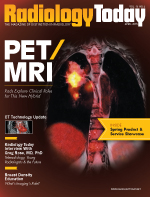 April 2015
April 2015
Radiology Billing and Coding: Physician Supervision Requirements for Radiology
By G. John Verhovshek, MA, CPC
Radiology Today
Vol. 16 No. 4 P. 10
When billing Medicare, outpatient diagnostic services—including imaging and other radiology procedures—must meet minimum requirements for physician supervision.
Only MDs and DOs May Provide Supervision
For diagnostic services in an outpatient setting, the Social Security Act §1861(r) requires "a doctor of medicine or osteopathy legally authorized to practice medicine in his or her state of practice" to act as the supervisory physician. Midlevel providers "are not permitted to function as supervisory 'physicians' for the purposes of other hospital staff performing diagnostic tests," according to the Medicare Benefit Policy Manual, chapter 6, §20.4.3.
Supervision requirements apply only to the technical component—the actual test administration—of a particular service. A physician always must provide the professional component (reading/interpretation of the results) for all services. If a physician legally authorized to practice medicine in the state the exam is performed personally performs the diagnostic testing service instead of a technologist, supervision requirements are not a concern.
Defining Supervision Levels
The Code of Federal Regulations (42 CFR 410.32) defines three levels of supervision, as follows:
1. General supervision: The service is furnished under the overall direction and control of the physician, but his or her physical presence is not required during the procedure.
2. Direct supervision: The physician must be present on the same campus and immediately available to furnish assistance and direction throughout the performance of the procedure. As originally defined in the 2011 Outpatient Prospective Payment System Final Rule, "immediately available" means "interruptible and able to furnish assistance and direction throughout the performance of the procedure but without reference to any particular physical boundary." The physician does not have to be in the room when the procedure is performed.
3. Personal supervision: The physician is present in the room when the service is being performed. Per the Benefit Policy Manual (chapter 6, §20.4.4), "The supervisory responsibility is more than the capacity to respond to an emergency, and includes the ability to take over performance of a procedure and, as appropriate to the supervisory physician and the patient, to change a procedure or the course of care for a particular patient."
How to Determine Supervision Requirements for Each Service/Procedure
The supervision requirement for each CPT and HCPCS Level II code is defined by a one or two character indicator, found in the "Physician Supervision of Diagnostic Procedures" column of the National Physician Fee Schedule Relative Value File (available as a free download on the Centers for Medicare & Medicaid Services (CMS) website: www.cms.gov/Medicare/Medicare-Fee-for-Service-Payment/PhysicianFeeSched/PFS-Relative-Value-Files.html). Indicators pertinent to diagnostic radiology procedures are as follows:
• 1. Procedure must be performed under general supervision.
• 2. Procedure must be performed under direct supervision.
• 3. Procedure must be performed under personal supervision.
• 9. Concept does not apply.
The "Physician Supervision" column may contain other indicators, such as "4," "5," and "6A," but these are not applicable to radiology services.
For example, the 2015 Relative Value File assigns a "1" indicator to the technical component of CPT 76100 (radiologic examination, single plane body section [eg, tomography], other than with urography; therefore, this type of X-ray exam may be provided under general supervision. The more complex imaging procedure 76102 (radiologic examination, complex motion (ie, hypercycloidal) body section [eg, mastoid polytomography], other than with urography; bilateral has been assigned a "2" indicator, meaning that the procedure must be provided under direct physician supervision for Medicare outpatients. Procedures requiring the personal supervision of a physician are infrequent. One such example is 76377 (3D rendering with interpretation and reporting of computed tomography, magnetic resonance imaging, ultrasound, or other tomographic modality with image postprocessing under concurrent supervision; requiring image postprocessing on an independent workstation).
Note: Although the above supervision requirements apply specifically to Medicare patients/services, contractual nondiscrimination clauses with private payers may require that hospitals and participating physicians apply the same rules for all patients.
Documentation Should Substantiate Supervision
The billing provider should maintain documentation to demonstrate that the required physician supervision has been furnished. CMS does not give specific advice or examples of appropriate documentation; however, best practice dictates that for those services requiring personal supervision, the physician should document, with a comment and signature, his or her presence during the test. For services requiring direct or general supervision, the provider performing the service should document the physician's direction or presence in the office, as required by the level of supervision, and the physician should confirm with his or her signature.
Although midlevel providers may not act as supervising physicians, they may in some cases (and when acting within their legal scope of practice) perform diagnostic testing. If a midlevel provider administers the test without physician supervision, the medical record should document clearly that the service is within the provider's scope of practice, as allowed by state law.
Be aware that physician supervision of diagnostic testing requirements is distinct from "incident to" billing requirements for midlevel providers. Incident to requirements are not applicable to diagnostic testing in the office setting. "Diagnostic tests may be furnished under situations that meet the incident to requirements but this is not required," according to the Benefit Policy Manual (chapter 15, §80).
Supervision Requirements Not Applicable to Inpatient Services
Medicare physician supervision requirements apply only to outpatient services, including those provided in a physician office or "furnished under arrangement in on-campus hospital locations, off-campus hospital locations, and in nonhospital locations" (Benefit Policy Manual, chapter 6, §20.4.5). The supervision requirements do not apply to hospital inpatient services. For inpatient services, CMS defers to hospital policy and Joint Commission standards.
— G. John Verhovshek, MA, CPC, is managing editor for AAPC, the nation's largest medical credentialing organization.

